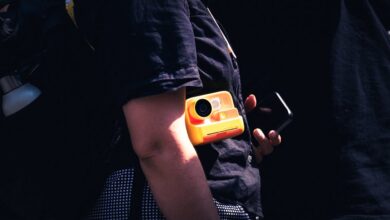US Investigators Are Using AI to Detect Child Abuse Images Made by AI

US Investigators Are Using AI to Detect Child Abuse Images Made by AI
Estimated reading time: Approximately 7 minutes
- US investigators are leveraging advanced AI technology to differentiate between real and AI-generated child sexual abuse material (CSAM), directing critical resources to genuine victims.
- The proliferation of AI-generated CSAM, which surged by 1,325% in 2024, has overwhelmed traditional methods, making AI detection essential for efficient and timely investigations.
- The Department of Homeland Security’s Cyber Crimes Center has contracted Hive AI for its generalizable AI detection software, capable of identifying synthetic imagery regardless of content type.
- This strategic shift ensures investigative resources are focused on cases involving real victims, enhancing the program’s impact and alleviating the psychological burden on law enforcement.
- Combating this threat requires a multi-faceted approach: technology companies advancing AI detection, governments funding digital forensics, and public vigilance and reporting.
- The Alarming Surge of AI-Generated CSAM
- Hive AI: Innovating Detection for Victim Protection
- Prioritizing Real Victims: A Strategic Shift
- Actionable Steps in the Fight Against Online Exploitation
- Conclusion
- Frequently Asked Questions
- What is AI-generated CSAM?
- Why is AI detection crucial for child exploitation investigations?
- How does Hive AI’s technology work to detect AI-generated content?
- What is the role of the National Center for Missing and Exploited Children (NCMEC)?
- How can individuals contribute to combating online child exploitation?
The digital landscape is constantly evolving, bringing with it both incredible innovation and daunting challenges. One of the most urgent and harrowing issues to emerge in recent years is the proliferation of AI-generated content depicting child sexual abuse material (CSAM). This alarming trend poses a significant hurdle for law enforcement agencies dedicated to protecting children online.
In a critical development, US investigators are now turning to advanced artificial intelligence themselves to combat this escalating threat. By deploying sophisticated AI tools, the aim is to distinguish between images of real victims and those synthetically created, thereby ensuring that precious investigative resources are directed precisely where they are needed most.
The Alarming Surge of AI-Generated CSAM
“Generative AI has enabled the production of child sexual abuse images to skyrocket. Now the leading investigator of child exploitation in the US is experimenting with using AI to distinguish AI-generated images from material depicting real victims, according to a new government filing.”
This stark reality underscores the urgency of the situation. The ease with which generative AI can now create highly realistic images has led to an explosion of illicit content online. This flood of synthetic material not only desensitizes but also overwhelms the systems and personnel tasked with identifying and intervening in real cases of abuse.
The scale of this problem is truly staggering. “The filing quotes data from the National Center for Missing and Exploited Children that reported a 1,325% increase in incidents involving generative AI in 2024. ‘The sheer volume of digital content circulating online necessitates the use of automated tools to process and analyze data efficiently,’ the filing reads.” This unprecedented growth makes manual review virtually impossible, creating a critical bottleneck in investigation efforts.
For child exploitation investigators, every second counts. Their primary objective is to locate and rescue children who are actively being abused. However, the immense volume of AI-generated CSAM complicates this mission by obscuring genuine cases. When investigators cannot quickly determine if an image depicts a real child, it consumes valuable time and resources that could otherwise be spent on active rescue operations. The ability to accurately and rapidly flag images of real victims is not merely an operational enhancement; it’s a lifeline in prioritizing cases and safeguarding vulnerable individuals.
Hive AI: Innovating Detection for Victim Protection
To address this critical challenge, the Department of Homeland Security’s Cyber Crimes Center, a key player in investigating international child exploitation, has forged a strategic partnership. The Center has awarded a $150,000 contract to San Francisco-based Hive AI for its cutting-edge software capable of identifying AI-generated content. This initiative marks a significant step towards leveraging technology to fight technology.
While specific details of the contract remain confidential due to the sensitive nature of the work—as Hive cofounder and CEO Kevin Guo told MIT Technology Review, he “could not discuss the details of the contract, but confirmed it involves use of the company’s AI detection algorithms for child sexual abuse material (CSAM)”—the core mission is clear: to enhance investigative capabilities. Hive AI is well-positioned for this task, offering a suite of AI tools not only for content creation but also for robust content moderation, flagging everything from violence and spam to sexual material and even celebrity identification. Notably, the company’s deepfake-detection technology has also been utilized by the US military, demonstrating its advanced capabilities in discerning authenticity.
Traditional CSAM detection tools, often employing “hashing” systems, assign unique digital IDs to known illicit content to block its re-upload. While effective in their purpose, these tools merely confirm an image as CSAM; they do not determine its origin—whether it’s real or AI-generated. Hive AI, however, has developed a distinct solution.
“Hive has created a separate tool that determines whether images in general were AI-generated. Though it is not trained specifically to work on CSAM, according to Guo, it doesn’t need to be. ‘There’s some underlying combination of pixels in this image that we can identify’ as AI-generated, he says. ‘It can be generalizable.'” This groundbreaking approach means the tool analyzes inherent patterns and artifacts often present in synthetic imagery, making it universally applicable across various content types. This powerful, generalizable AI detection tool is precisely what the Cyber Crimes Center will be deploying to evaluate CSAM, with Hive AI also committing to benchmark its detection tools for the specific use cases its customers require.
The government’s decision to award this contract to Hive without a competitive bidding process, though partly redacted in public filings, was justified by Hive’s proven track record. Key references include a 2024 University of Chicago study where Hive’s AI detection tool outperformed four competitors in identifying AI-generated art, alongside its existing contract with the Pentagon for deepfake identification. This three-month trial period will be crucial in evaluating the tool’s effectiveness in this critical domain.
Prioritizing Real Victims: A Strategic Shift
The implementation of AI detection marks a pivotal strategic shift in the fight against child exploitation. “Identifying AI-generated images ‘ensures that investigative resources are focused on cases involving real victims, maximizing the program’s impact and safeguarding vulnerable individuals,’ the filing reads.” This focus is not just about efficiency; it’s about justice and protection.
By effectively filtering out synthetic images, investigators can allocate their limited time and emotional energy to pursuing leads that involve actual children. This not only streamlines investigations but also mitigates the psychological toll on law enforcement officers who are constantly exposed to horrific material. The ability to quickly identify and dismiss AI-generated content means that every active case can receive the attention it deserves, increasing the likelihood of timely intervention and rescue.
Real-World Impact: An Investigator’s Perspective
Imagine an investigator sifting through thousands of reported images daily. Without AI detection, each image requires manual review, a process that is both emotionally taxing and incredibly time-consuming. With Hive’s tool, a quick scan can flag a significant portion of images as AI-generated, immediately narrowing the focus to those that potentially depict real victims. This swift triage allows for immediate action where it’s most needed, saving critical time in active abuse cases. For instance, if 80% of incoming content is identified as AI-generated, an investigator can devote 100% of their human effort to the remaining 20% that warrants urgent human attention, dramatically improving their response capabilities.
Actionable Steps in the Fight Against Online Exploitation
Combating the evolving threat of AI-generated CSAM requires a multi-faceted approach involving technology, policy, and public awareness. Here are three key actionable steps:
- For Technology Companies: Implement and Advance AI Detection Tools. Companies developing or hosting user-generated content must integrate robust AI detection and content moderation systems into their platforms. This isn’t just about compliance; it’s about corporate responsibility. Continuous investment in research and development for these tools is crucial as generative AI technology rapidly evolves. Collaboration with law enforcement and non-profits, like Hive AI’s work with Thorn, can accelerate the development of effective defenses.
- For Policy Makers and Law Enforcement: Fund and Support Digital Forensics and AI Integration. Governments and legislative bodies must prioritize funding for advanced AI research, development, and deployment within digital forensics units. This includes providing the necessary resources for training investigators on new technologies, establishing clear legal frameworks for prosecuting creators and distributors of AI-generated CSAM, and fostering international cooperation to address cross-border crimes. Supporting initiatives like the DHS’s contract with Hive AI is paramount.
- For the Public: Be Vigilant, Report, and Advocate. Every internet user has a role to play. Be vigilant about the content you encounter online. If you suspect any form of child exploitation material, real or AI-generated, report it immediately to relevant authorities like the National Center for Missing and Exploited Children (NCMEC). Educate yourself and others about the dangers of online exploitation and advocate for stronger child safety measures and technologies. Your awareness and action can make a tangible difference.
Conclusion
The battle against child exploitation online has entered a new and complex phase with the advent of generative AI. The ability of US investigators to leverage AI to detect AI-generated CSAM is a testament to human ingenuity in the face of grave challenges. This innovative use of technology promises to revolutionize how law enforcement prioritizes cases, ensuring that focus remains on rescuing real victims and bringing perpetrators to justice.
While the path ahead will undoubtedly present new obstacles, the strategic deployment of advanced AI tools offers a beacon of hope. By continuously adapting, collaborating, and investing in these critical technologies, we can collectively strive to create a safer digital environment for all children, where their innocence is protected, and their futures remain unblemished by online predators, whether human or algorithmic.
Want to learn more about safeguarding children online and the latest advancements in digital forensics?
Visit the National Center for Missing and Exploited Children (NCMEC)
Frequently Asked Questions
What is AI-generated CSAM?
AI-generated CSAM (Child Sexual Abuse Material) refers to images or videos depicting child sexual abuse that are synthetically created using artificial intelligence technologies, particularly generative AI. These images do not depict real children but are designed to appear highly realistic, posing a challenge for traditional detection methods.
Why is AI detection crucial for child exploitation investigations?
AI detection is crucial because the volume of AI-generated CSAM has skyrocketed (e.g., 1,325% increase in 2024 according to NCMEC data). This flood of synthetic content overwhelms law enforcement, consuming valuable time and resources that should be dedicated to finding and rescuing real victims. AI detection helps investigators quickly filter out fake content, allowing them to prioritize genuine cases of abuse.
How does Hive AI’s technology work to detect AI-generated content?
Hive AI has developed a generalizable tool that identifies inherent patterns and artifacts often present in synthetic imagery, regardless of the content. Unlike traditional “hashing” systems that match known illicit content, Hive’s AI analyzes the pixels to determine if an image was AI-generated. This makes it a versatile tool for distinguishing between real and synthetic CSAM.
What is the role of the National Center for Missing and Exploited Children (NCMEC)?
The National Center for Missing and Exploited Children (NCMEC) is a non-profit organization that serves as a clearinghouse for information about missing and exploited children. They provide data to law enforcement, assist in investigations, and operate a CyberTipline for reporting child sexual exploitation. Their data highlights the alarming increase in AI-generated CSAM.
How can individuals contribute to combating online child exploitation?
Individuals can contribute by being vigilant about online content, immediately reporting any suspected child exploitation material (real or AI-generated) to authorities like NCMEC, and advocating for stronger child safety measures and technologies. Educating oneself and others about the risks and reporting mechanisms is also a crucial step.





